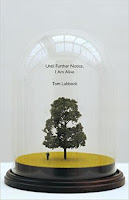At a cocktail party last week, the conversation turned to healthcare. Of course, these days, the conversation might also turn to healthcare at the gas station, yoga class, or PTA meeting. We’re all concerned about what changes are coming to healthcare.
But we residents of CancerLand have special concerns—we worry about what will happen to preexisting conditions, the cost of tests and screening, and possible limitations on certain treatments. Patients surely don’t need that extra fear, and as caregivers we take an extra twist in our healthcare worry: we put off our own care.
So often we caregivers forget that we are patients too. We are the “invisible patients.” That’s the term I’ve
been chewing on this week after reading the book, “Healing Healthcare –How Doctors and Patients Can Heal Our Sick System” by Jeff Kane, MD.
That cocktail party conversation turned out to be a valuable one because one of the people I was chatting with insisted that I get—and read—Kane’s book. And he was so adamant that I ordered one right away and dug in.
I was expecting economic analysis or demographics or maybe operating room stories but I had a great surprise: Kane’s specialty is compassion. Yes, compassion as a best practice in healthcare and measuring the impact of compassion as a practice in hospital and home care. Yes, wow!
You’ll be pleased too to see how Kane writes about the importance of family caregivers—and he uses the term, “the invisible patient”. He’s a strong advocate for doctors and nurses being trained to include the caregiver in exam, discussion, treatment planning and aftercare—and most radical, he believes that the primary patient cannot get well if the caregiver’s needs are not addressed. And by “addressed” he does not mean a long soulful look and “How’s it going Bob?” moment before the couple leaves his office. He means taking the caregiver’s blood pressure, talking about their sleep and diet, and finding out how much help they have at home.
Kane documents why this is so crucial: the incidence of depression and anxiety in caregivers, how those problems bloom into physical disorders such as high blood pressure, decreased immunity, and cardiovascular disease. If you are a caregiver or are around some you’re not surprised to read this. But look at this from Kane: “Spousal caregivers age 66 or older have a 63 percent higher mortality rate than non-caregivers the same age.”
This smart doc knows that one patient will turn into two very quickly when giving care to a loved one with cancer or other serious, chronic illness.
Kane’s book is well worth a read: for all caregivers, for family members around the caregiver, for healthcare staff too. An idea: Be bold and buy a copy ($1 or $2 for a used copy) and hand one to your doc and mark the pages about caregivers. A little education and honest conversation can go a long way.




